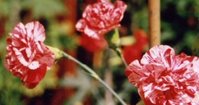Ventilation: avoiding excess humidity

Whenever I tell my neighbours that I have a fully equipped grow room in my basement recreation room, inadvertently the conversation turns to pot. “Did you hear that Snoop Dog got busted the other night after his appearance on The Tonight Show? Yeah, he was leaving the Burbank studios and the cops pulled him over. Had enough drugs on him to make Pharmasave envious.”
As soon as it becomes clear that I’m only growing innocent flowers, they seem disappointed. “We were hoping you could invite us over for your harvest celebration!” I always try to interest them in buying a bouquet for their loved ones. I keep some fresh greens on hand just for such emergencies.
Then they start fretting about the humidity and the mold. “We saw on TV that all these grow-ops have mold and mildew covered walls and that they’re totally unhealthy for the neighborhood.” I reassure them that the media exaggerates those problems and that the humidity and bad fungi in my grow room are controlled by making sure that there’s adequate air movement and ventilation.
Stomata are tiny pores on the underside of leaves that can’t even be seen with a naked eye. They’re like the nostrils of an animal, in reverse. They control the amount of carbon dioxide that’s inhaled, along with the oxygen that’s exhaled. Stomata are easily clogged by dirt and dust particles in the air and the filmy residue left over from some sprays.
Outdoors, the stomata are cleaned by the wind and rain. The indoor horticulturalist must either wipe each leaf by hand, or use a mister to stimulate rain and good air circulation to mimic wind.
I not only have a powerful exhaust fan located near the ceiling of my grow room to suck hot and humid air out, I have two ventilation fans located on opposite walls near the bottom of the room to bring fresh air in from the outside.
It addition, I have two oscillating fans near the floor, aimed up at the bottom of my Drip Irrigation Hydroponic system and the rockwool slabs that hold my carnations. These fans push oxygen into my reservoir, as well as circulate the air under the leaves where the stomata are.
I feed my plants a basic diet of Advanced Nutrients Micro, Grow, and Bloom, always pouring the Micro into my mixing tank first, then the Grow or the Bloom, according to the cycle that my plants are going through.
My babies suck up a considerable amount of water along with the nutrients, and this moisture is transpired into the air of the grow room by the leaves. Without adequate ventilation, this moisture would cause a 100% humid environment, leading to the dreaded mold and mildew problems of the grow ops depicted on the TV news.
I make sure that my humidity never rises above fifty percent. Whenever it does, the fans automatically kick in on high setting to clear all the humid air out and fresh, dry air in. When the temperature outside is below zero Centigrade, my two oil-based radiators jump in to warm up the inflow of freezing air.
This week I’m mixing Carbo Load Liquid, Calcium Mg Mix, and B-52 into my reservoir. I figure I eat more sweets and chocolates in the winter, so my carnations probably need more carbohydrates.
Calcium and Magnesium are constantly depleted by the growth of my babies, so they have to be replenished.
And I also take a B-complex supplement, so why should my plants be any different? B-52 helps increase their resistance to stress and it ensures that young plants grow up healthy and vigorous.
Check out the Advancedepedia for detailed product descriptions on all these wonderful supplements.
I did real well in the flower show last week, thanks to the dynamite nutrients I feed my carnations.
posted by Jill @ 11:19 PM
0 comments
![]()




